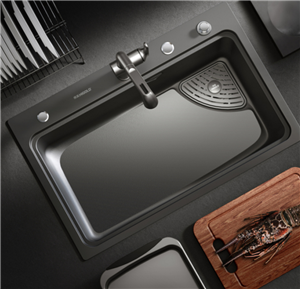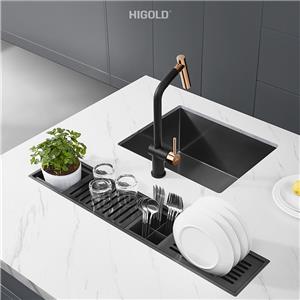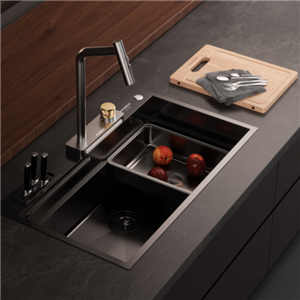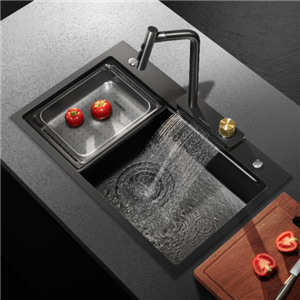Why has my stainless steel kitchen sink turned yellow?
The kitchen sink is one of the most frequently used devices in daily family life. It carries multiple functions such as cleaning, preparing food, and draining. As an important element in kitchen decoration, stainless steel sinks have always been favored by consumers for their durability, corrosion resistance, and easy cleaning. However, although stainless steel sinks have many advantages in performance, after using them for a period of time, many people will find that the surface of the sink turns yellow, and sometimes even accompanied by greasy feeling or spots. This phenomenon often confuses people and makes many housewives and kitchen managers doubt: "Why did my stainless steel kitchen sink turn yellow?" "How to solve this problem?"
The problem of stainless steel sinks turning yellow is not just a change in appearance, it often means that some chemical or physical reaction has occurred on the surface of the sink. In this regard, this article will explore the reasons why stainless steel sinks turn yellow, analyze the possible influencing factors, and propose effective solutions to help consumers better maintain stainless steel sinks, extend their service life, and keep the kitchen clean and beautiful.
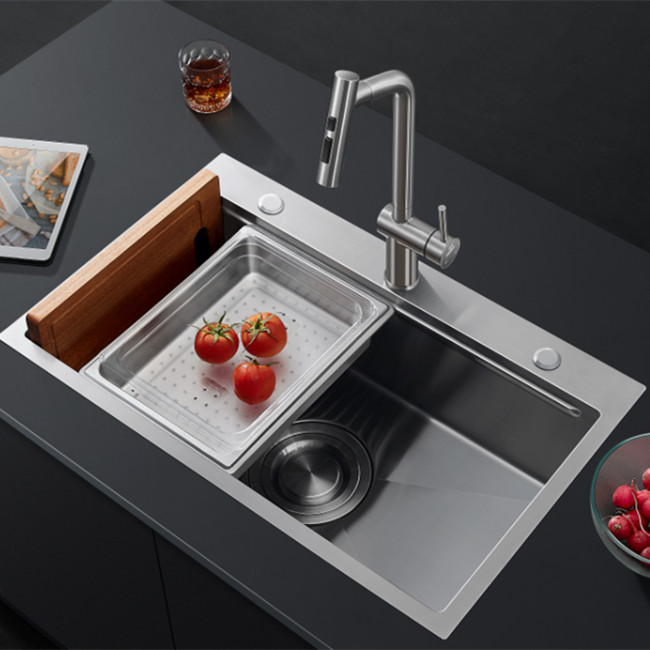
What are the characteristics of stainless steel sinks?
First, we need to understand the material and performance characteristics of the stainless steel sink in order to better understand why it changes color. Stainless steel sinks in modern kitchens are usually made of 304 stainless steel or 316 stainless steel, both of which have high corrosion resistance, wear resistance and oxidation resistance. 304 stainless steel contains 18% chromium and 8% nickel, and has good oxidation resistance and rust resistance; while 316 stainless steel adds molybdenum to 304, which has stronger corrosion resistance and is especially suitable for use in chloride-containing environments.
These advantages of stainless steel sinks make them an ideal choice in the kitchen. However, although stainless steel sinks themselves have strong durability, long-term use and improper maintenance may still cause the surface of the sink to turn yellow, darken or rust. This problem is usually closely related to factors such as the external environment, cleaning habits and water quality.
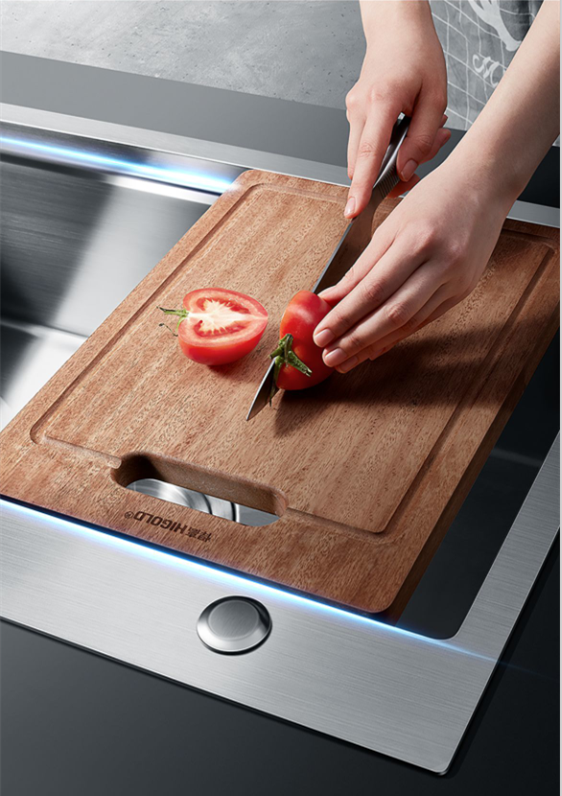
Why did my stainless steel kitchen sink turn yellow?
1. Water quality problem
Water quality is an important factor that causes stainless steel sinks to turn yellow. If the water used in the kitchen sink is hard and contains high minerals or organic matter, when the water flows through the surface of the sink, the minerals are deposited on the surface of the sink, which is easy to form scale. The long-term accumulation of these minerals will cause yellow or gray stains on the surface of the sink. This scale not only affects the appearance of the sink, but also may accelerate the corrosion of the sink surface, causing discoloration on the sink surface.
In addition, iron ions in the water may also cause the surface of stainless steel to rust, forming brown or yellow spots. This phenomenon is more common in tap water in some areas, especially iron pipes or water sources containing rust will be brought into the sink, causing the surface of stainless steel to turn yellow.
2. Improper cleaning or use of strong acid and alkali cleaners
Although stainless steel sinks are highly resistant to corrosion, improper use of detergents, especially strong acid or alkaline detergents, may also cause color changes on the surface of the sink. Many people are accustomed to using bleach, acid detergents, chlorine-containing detergents, etc. to clean the sink. These chemicals may destroy the surface protective film of the sink, causing the surface of the stainless steel sink to oxidize and turn yellow.
In addition, if the detergent residue is not rinsed thoroughly and in time, it may also cause a chemical reaction on the surface of the sink, which may lead to discoloration. For example, when using a strong oil cleaner, if it is not rinsed in time, the residual chemical components may react with the surface of the sink to form yellow spots or stains.
3. Accumulation of oil stains and food residues
The kitchen is a place for cooking and cleaning. In daily use, the sink will be exposed to stains such as grease, food residues, and sauces. If the sink is not treated in time when cleaning, oil stains and food residues will be deposited on the surface of the sink. Over time, oil stains will combine with scale and minerals on the surface of the sink to form yellow or greasy patches.
Especially during the cooking process, oil smoke and splashed sauces may remain in the sink. Long-term accumulation and failure to clean up in time will aggravate the yellowing of the sink. Even for a seemingly clean sink, tiny pollutants, oil stains, residues, etc. in the water will leave marks on the stainless steel surface, eventually causing yellowing.
4. Damage to the protective film on the surface of the sink
Many stainless steel sinks have been specially polished or protected to make their surface smooth and have a certain degree of stain resistance. If the protective film on the surface of the sink is damaged, such as scratching the surface of the sink during use, this protective film may be destroyed, making the sink vulnerable to water quality, stains, oxygen in the air and other chemicals, and eventually causing discoloration.
The surface protective film of the stainless steel sink is very thin. After damage, the sink may be more susceptible to the accumulation of stains and cause the appearance of yellow spots. If there are scratches or wear on the surface of the sink, it is recommended to repair or re-polish it as soon as possible to restore its protective function.
5. The influence of high temperature and hot water
The kitchen sink is in a high temperature environment for a long time, especially when it is in contact with hot water or directly in contact with high temperature objects. The surface of the stainless steel may be affected by the temperature, causing the surface to oxidize or fade. Although stainless steel itself has a strong ability to resist high temperatures, long-term exposure to high temperatures may still cause the surface to turn yellow, especially when it is in contact with grease or organic matter for a long time.
When cleaning kitchen utensils, if you use high-temperature water to directly flush the sink, especially when there is oil stains or dirt on the surface of the sink, the high-temperature water may aggravate the fixation of oil stains and make the surface of the sink yellow.
6. Pollutants in the air
Pollutants in the air, especially oil smoke, dust, chemical gases, etc., may also affect the surface of stainless steel sinks to a certain extent. When the kitchen is heavy with oil smoke or detergents are used, the chemicals in the air may adhere to the surface of the sink and react with the components on the surface of the sink, causing the stainless steel surface to turn yellow. This situation is more common in kitchens with heavy oil smoke, especially during cooking.
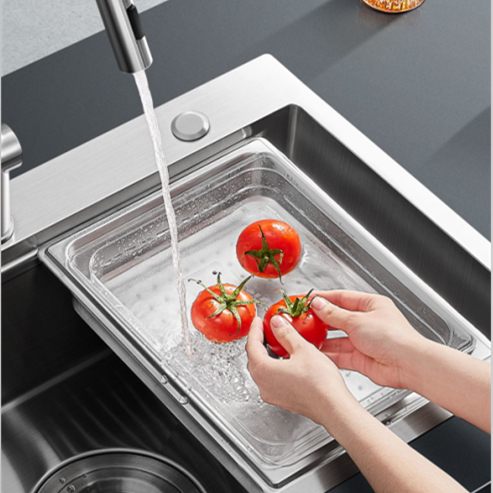
What are the solutions to yellowing stainless steel kitchen sinks?
After understanding the reasons for the yellowing of stainless steel sinks, we can take corresponding measures to solve this problem. The following are some effective cleaning and maintenance methods to help restore the sink to its new shine.
1. Use professional cleaners
In order to avoid damaging the sink surface with strong acid or alkaline cleaners, consumers should choose cleaners designed specifically for stainless steel sinks. These cleaners are usually milder and can remove oil, scale and minerals without damaging the sink surface. When using, follow the instructions of the detergent and avoid overuse.
2. Clean and dry regularly
In daily use, timely clean the oil and food residue in the sink, which can not only prevent the sink from turning yellow, but also keep the sink clean. When cleaning, you can use a soft sponge or cloth, and avoid using rough brushes or steel wool to prevent scratching the surface of the sink. After cleaning, it is best to wipe the sink dry with a clean cloth to avoid stains left by water stains.
3. Use natural cleaners
For some more stubborn yellow stains, you can try using natural cleaners, such as a mixture of baking soda and vinegar. Baking soda has a slight abrasive effect and can help remove surface stains; vinegar has a descaling function and can dissolve scale and minerals. Sprinkle baking soda on the surface of the sink, then spray some white vinegar, let it stand for a few minutes, and then wipe it with a sponge. The effect is very obvious.
4. Prevent scale accumulation
If the water quality in your area is hard, the sink is prone to accumulate scale, and you can use a descaling cleaner to clean it regularly. In addition, installing a water softener is also an effective way to reduce scale accumulation, which can effectively prevent water quality from damaging stainless steel sinks.
5. Avoid high-temperature objects from contacting the sink
In the kitchen, try to avoid placing high-temperature objects directly in the sink, especially hot pots, thermoses, etc. High temperatures may cause damage to the surface of the sink or even discoloration. Therefore, be especially careful when using it to avoid objects with excessively high temperatures from directly contacting the sink.
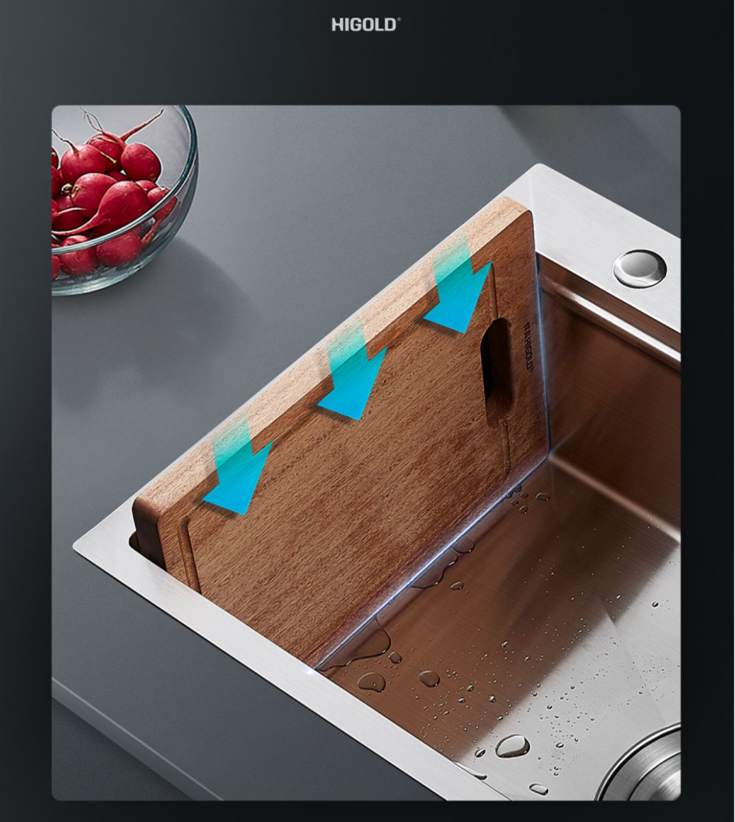
High-Quality, Custom Stainless Steel Sinks at Wholesale Prices
Looking to buy high-quality stainless steel Inox sinks at wholesale prices? Higold Group Co., Ltd. is a trusted manufacturer and supplier that offers affordable solutions for bulk orders. Our factory is equipped with cutting-edge technology to produce top-tier sinks and faucets efficiently and cost-effectively. We offer customized designs to meet specific needs, and our competitive prices ensure that you get the best value for your purchase. Get in touch for a free quote and start your wholesale purchase today!

